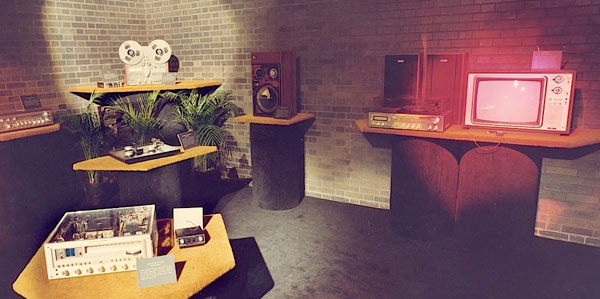Updating the Past Part I
Maybe you’re an avid collector of analog tape or vinyl LP and have been thinking about bringing your catalog into the digital present. If you’ve got shelves full of vinyl and/or boxes full of aging analog tape, it might be time to archive this material in a high-definition digital format for use in a music server or to simply protect them against loss or damage. Or maybe you’re a major record company and thinking that your valuable catalog of analog two track masters should be archived in a digital format as protection against the degradation that can occur to analog tape. What do you do?
The process of taking older formats and transferring them to newer digital formats is known as archiving. There is a sense of protecting a valuable asset against obsolete storage formats but in the world of audiophiles it goes further than that. What we want is to copy the source asset into a more convenient form AND maintain all of the fidelity of the original. Even staunch advocates of vinyl LPs and analog tape will tell you that its much more convenient to just sit down, pick up your tablet or remote control and hit play on your music server than it is to string up an analog tape or drop the stylus on the lead in groove of a piece of vinyl LP.
Not long ago, I was contacted by the wife of a friend and fellow composer from Cal Arts (I received my MFA from there in 1984). The late Art Jarvinen was a very talented percussionist, member of the California E.A.R. Unit (I did sound reinforcement for them at the Los Angeles County Museum of Art for years) and composer. He also formed a small publishing company call Leisure Planet Music. Art was kind enough to publish a number of my compositions including a piece for Marimba, a MIDI mallet controller and analog tape. Lynn contacted me about the tape part of the work. A percussion and graduate student at Louisiana State University needed the score and tape as part of their research for a dissertation on percussion pieces with electronics. She couldn’t locate the tape part and inquired whether I could help.
It’s been a long time since that piece has been performed and I told her I doubted whether I could put my fingers on the master tape right away. There are a lot of boxes containing a lot of tapes (analog tape, F1 video cassettes, DAT tapes, Exabyte tapes and cassette tapes) stashed away in the deep recesses of the second story of my building. I told her I would look.
I was surprised that I was able to find a box containing almost all of the recordings of my works. As I looked at each box, I was transported back to the 80’s and 90’s when I was an active student and composing a lot of music. There are tapes of my two symphonies, lots of chamber music including my String Quartet that was selected to be part of a Pierre Boulez Master class.
So I dusted off my Nagra reel-to-reel machine and transferred the tape part of “Morphism IV for Marimba, Mallet MIDI Controller and Analog Tape” to a compact disc and mailed off several copies to Leisure Planet Music. What I did was convert the original tape format to a 96 kHz/24-bit PCM sound file through my Benchmark ADC, downconverted the HD file to CD resolution of 44.1 kHz/16-bits and burned a Redbook CD (BTW this was completely “handcrafted”!). Not only did I archive my older analog master to a high-definition sound file (at 96 kHz/24-bits PCM) but I also made a CD for convenient playing and easy transmission.
This is the process that confronts everyone that owns analog tapes, vinyl LPs, F1 Masters (my are on Beta Video Tapes!) and other older formats. There are a lot of questions and issues that must be considered as one approaches audio archiving any format. You can even have a professional service do this sort of work for you, but we’ll take a careful look at how you can accomplish this work on your own.
Tomorrow we’ll look at the hardware needed to make this happen.

